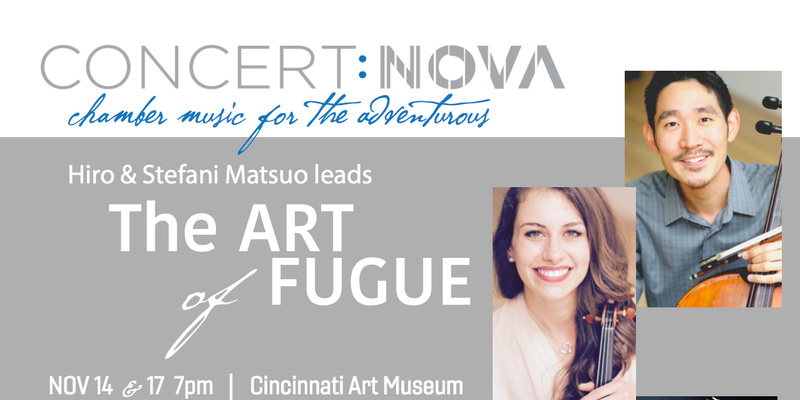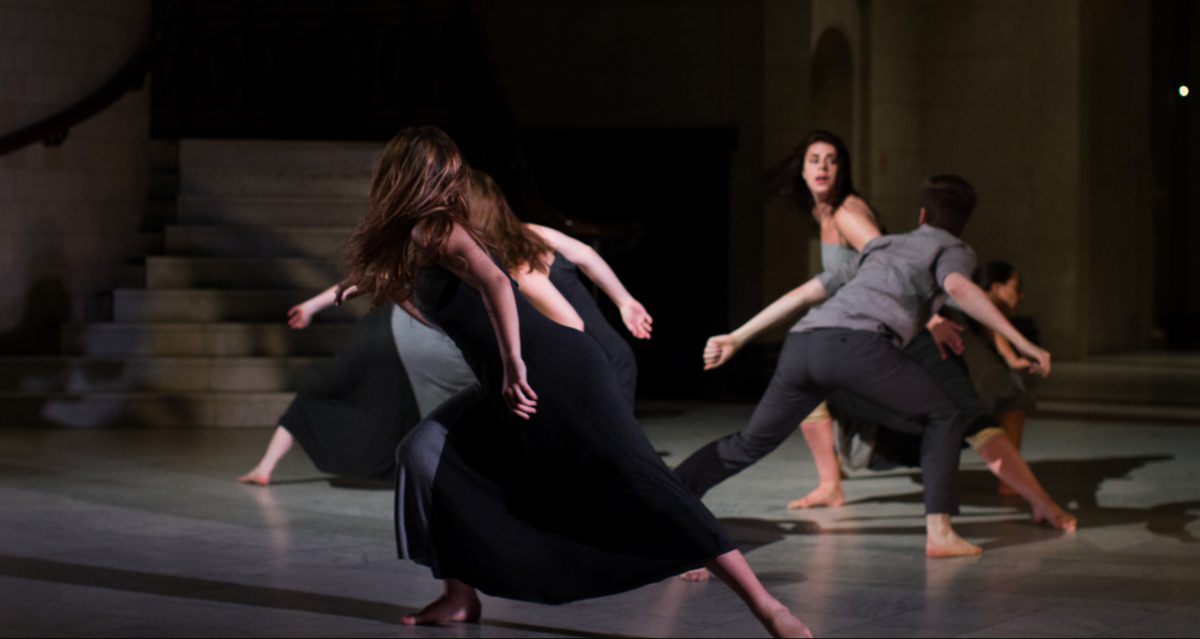The Art of Fugue by concert:nova, featuring MamLuft&Co. Dance

concert:nova Artistic Directors Hiro and Stefani Matsuo create an exploration of the fugue featuring J.S. Bach’s Art of the Fugue, Michael Ippolito’s String Quartet No. 4, and Beethoven’s colossal Grosse Fugue. Dancers from the innovative, contemporary MamLuft&Co. Dance draw visual parallel to the fugal voices in J.S. Bach’s Art of the Fugue.
What is a FUGUE?
The word fugue means to flee. Simply put it describes a technique used by many composers in which the voices or parts in the score successively play the same theme or subject in imitatation of each other at different pitches. When this happens as a passage within a larger piece it is said to be a fugal section or a fugato. Fugues often occur in three to four parts, but eight or even ten voices can occur in larger orchestral pieces.
The 18th century composer Johann Sebastian Bach is generally regarded as the greatest composer of fugues. He often entered into contests where he would be given a subject with which to spontaneously improvise a fugue on the organ or harpsichord.
Bach’s most famous works as far as fugues go are the unfinished Art of Fugue and The Well-Tempered Clavier.
PROGRAM
Bach: Prelude and Fugue from Cello Suite No. 5 in C minor
Ted Nelson, cello
Bach: The Art of Fugue
Contrapunctus I
Contrapunctus IV (with ML&Co.)
Canon alla decima: violin and viola (with ML&Co.)
Canon alla duodecima: violin and cello (with ML&Co.)
Contrapunctus VI
Contrapunctus VII (with ML&Co.)
Contrapunctus XI
Contrapunctus XII (with ML&Co.)
Contrapunctus IX
-intermission-
Michael Ippolito: String Quartet No. 4
Beethoven: Grosse Fugue, Op. 133
Stefani Matsuo, violin
Stacey Woolley, violin
Rebe Barnes, viola
Hiro Matsuo, cello
MamLuft&Co. Dance is a




